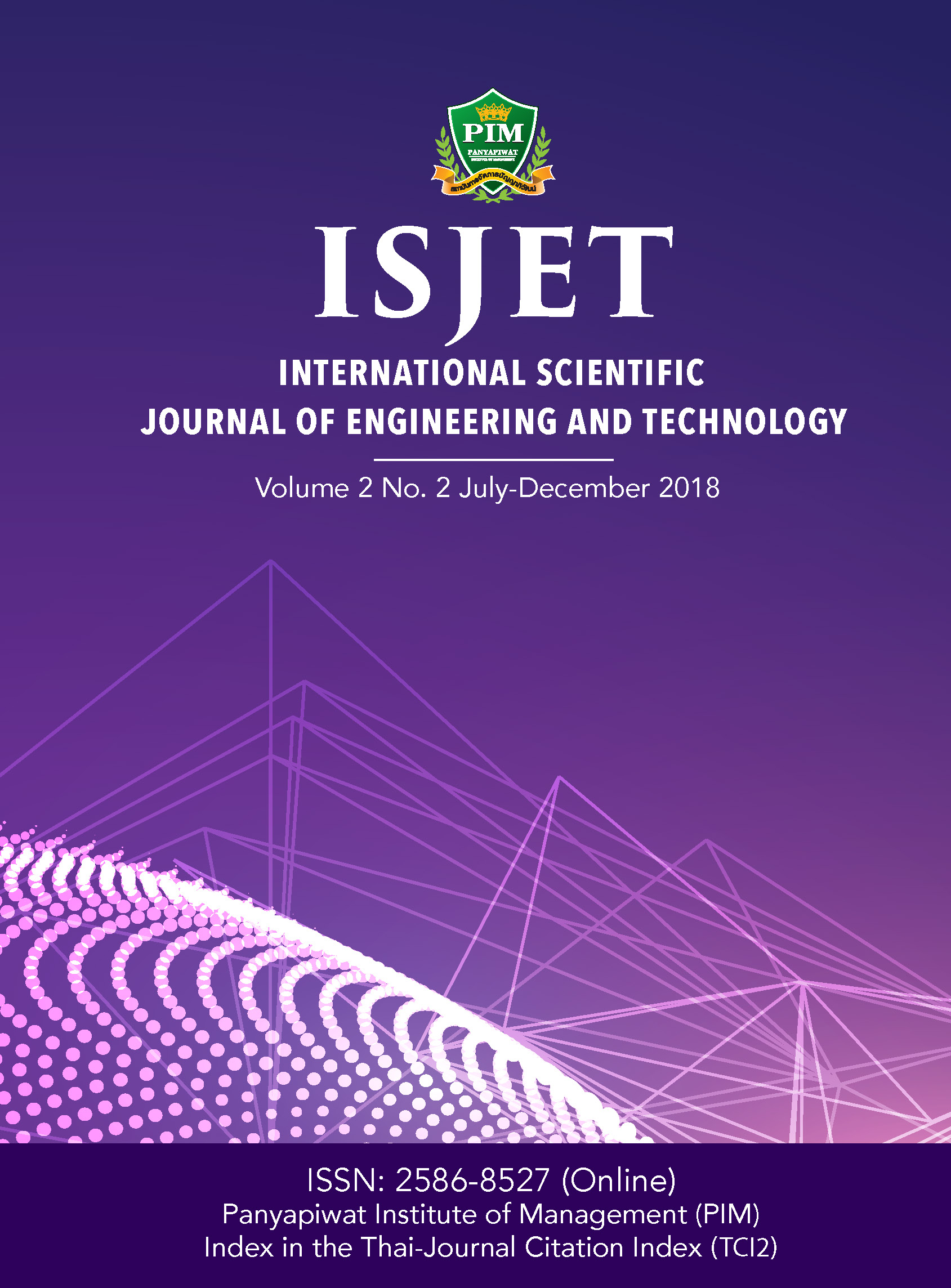Customer Retention of Using Mobile Banking a Case Study of One of the Largest Bank in Thailand
Main Article Content
Abstract
This research is focused more on the customer retention of using mobile banking service in Thailand i.e. a case study of one of the largest bank in Thailand. The study has combined personality dimensions of Technology Readiness Index and cognitive dimensions of Technology Acceptance Model with antecedents such as consumer satisfaction and loyalty to provide robust framework of mobile banking adoption process. Also the study examines the influencing factors that determine the customer loyalty for ABC mobile banking application. The Inferential Analysis was done to test the validation of the technology readiness and acceptance model (TRAM) constructs and their interrelationship among each other. The finding reveals that TRAM variables have a significant influence on use of ABC Bank Mobile application in Bangkok. The study concludes with a discussion on practical implications of the research across similar service providers within the industry.
Article Details
เนื้อหาข้อมูล
References
[2] Bank of Thailand. (2015) Annual Report. Available: https://www.bot.or.th/English/ResearchAndPublications/Report/
DocLib_AnnualEconReport/AnnualReport2015.pdf
[3] KPMG Mobile Banking. (2015). Global Trend and impact on Bank. Available: https://www.kpmg.com/FR/fr/IssuesAnd
Insights/ArticlesPublications/Documents/Mobile-Banking-092015.pdf
[4] Master Card Mobile Shopping Survey. (2015). Mobile Commerce Growing Fast in Asia Pacific with Half of
Smartphone Users now Shopping on their Device. Available: https://www.masterintelligence.com/content/intelligence/en/research/press-release/2015/mobile-commerce-growingfast-in-asia-pacific.html
[5] F. D. Davis, “Perceived usefulness, Perveived Ease of Use and User Acceptance of Information Technology,” MIS Quarterly, vol. 13, no. 3, pp. 319-340, 1989.
[6] S. Xiao, T. Siriphanupong, and P. Thanabordeekij, “The Exploratory Study of Behavioral Intention to Use the 3D
Printing Technology: A Case Study of XYZ Bakery and Coffee,” International Scientific Journal of Engineering and
Technology (ISJET), vol. 1, no.1, pp. 36-41, 2017.
[7] M. Fishbein, and I. Ajzen, “Belief, attitude, intention and behavior: An introduction to theory and research,” MA:
Addison-Wesley, vol. 47, May. 1975.
[8] I. Ajzen, “The theory of planned behavior,” Organizational Behavior and Human Division Processes, vol. 50, no. 2,
pp.179-211, 1991.
[9] C. Lin, H. Shih, P. Sher, and Y.-L. Wang, “Consumer adoption of e-service: Integrating technology readiness with the technology acceptance model,” Technology Management: A Unifying Discipline for Melting the Boundaries, pp. 483-488, Jan. 2005.
[10] J. Pfeffer, “Organizations and Organization Theory,” Pitman, Boston, MA, pp. 398-432, 1982.
[11] V. H. Vroom, “Industrial Social Psychology,” Annual Review of Psychologyeview of psychology, vol. 12, pp. 413-446, Feb. 1961.
[12] M. Callegaro, K. L. Manfreda, and V. Vehovar, “Web Survey Methodology,” SAGE, pp. 162-188, 2015.
[13] I. Ajzen, and M. Fishbein, “Understanding attitudes and predicting social behavior,” Englewood-cliffs, NJ. Prentice
Hall. vol. 278, pp. 278, 1980.


